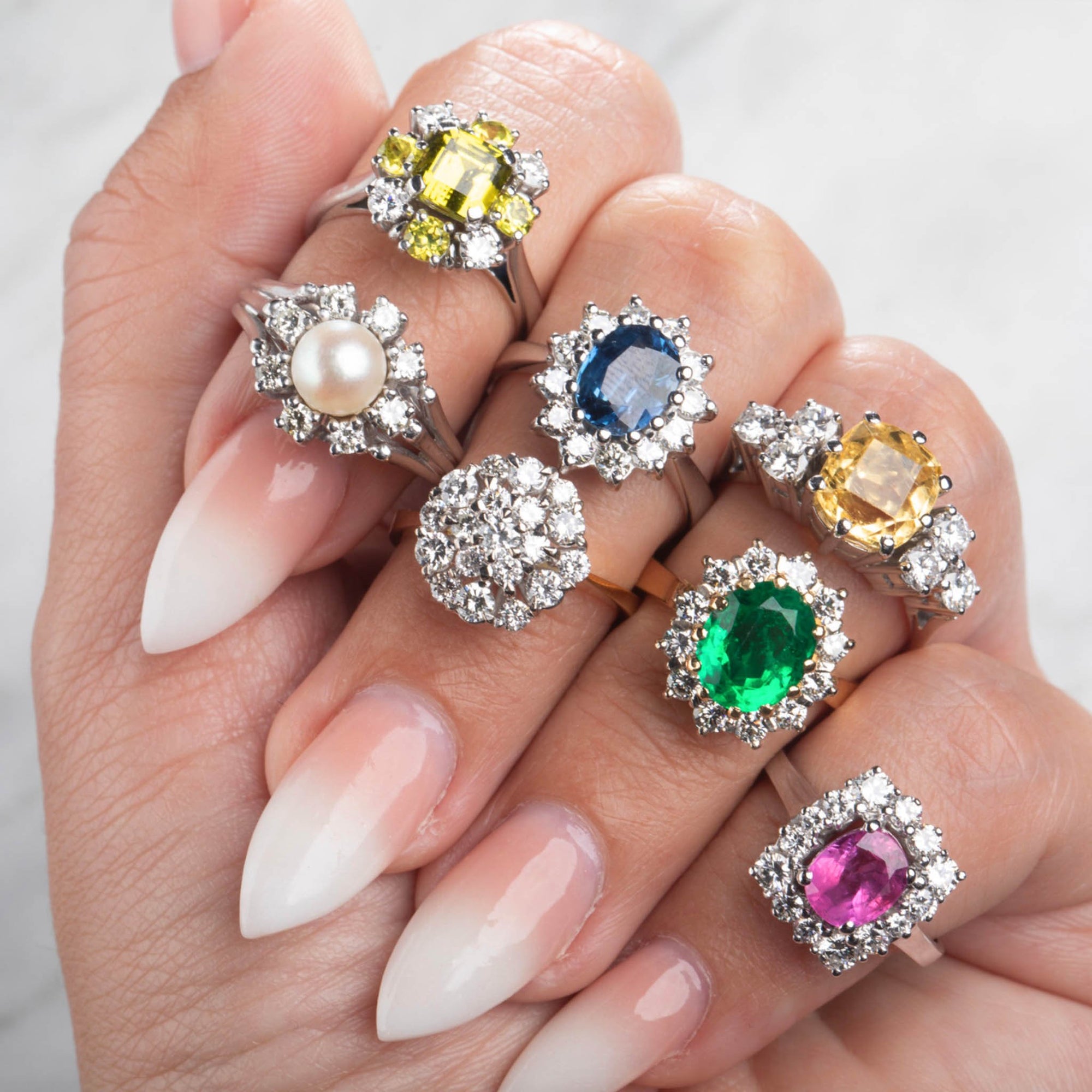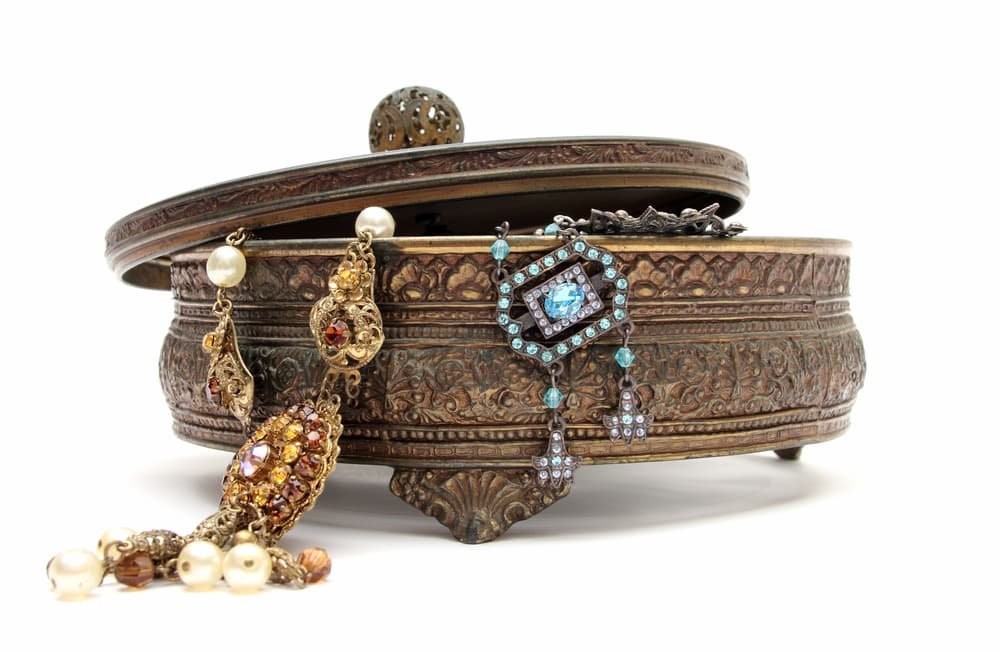Shop at specialty stores for rare antique jewelry austin.
Revealing the Attraction of Antique Precious Jewelry: Understanding Its Various Styles
Vintage precious jewelry offers as a captivating home window right into the past, offering insights right into the social and imaginative subtleties of different eras. Each design, from the stirring details of Victorian precious jewelry to the fluid beauty of Art Nouveau, envelops the sentiments and technologies of its time.
Victorian Era Jewelry
The allure of Victorian Era fashion jewelry depends on its elaborate craftsmanship and profound significance, mirroring the societal worths and emotional currents of the time. Covering from 1837 to 1901, this period was characterized by an attraction with nature, grieving, and romanticism, which exceptionally influenced precious jewelry layout. Jewelry pieces frequently featured sophisticated motifs, such as flowers, animals, and detailed filigree work, crafted from products like gold, silver, and gems.

Additionally, the technological innovations of the Industrial Change permitted even more complex styles and making use of brand-new products, such as diamonds and pearls. This democratization of luxury made jewelry extra obtainable to the middle course, resulting in an expansion of varied styles. On The Whole, Victorian Period jewelry remains an exciting testament to the complex interplay of art, emotion, and social norms during a transformative historic duration.
Art Nouveau Creations
Characterized by its organic types and moving lines, Art Nouveau fashion jewelry arised in the late 19th and very early 20th centuries as an action to the automation and rigid designs of the coming before ages. This imaginative motion sought to welcome nature, incorporating elements such as blossoms, leaves, and vines right into the designs. Art Nouveau pieces usually featured unbalanced compositions, emphasizing a feeling of motion and fluidness.

Making use of innovative techniques, such as enameling and the unification of glass, further prominent Art Nouveau fashion jewelry from its precursors. The activity ultimately commemorated uniqueness and artistic expression, making each item a special artwork. Because of this, Art Nouveau developments continue to captivate enthusiasts today, embodying a distinctive mix of beauty and nature that continues to be classic.
Edwardian Duration Parts
During the early 20th century, the Edwardian period experienced an exceptional evolution in fashion jewelry design, noted by a focus on sophistication and luxury. This era, called after King Edward VII, covered from 1901 to 1910 and is identified by the intricate craftsmanship and fragile appearances that define its pieces.
Precious jewelry from this period typically features platinum setups, a material that enabled finer and more elaborate layouts, boosting the play of light against the gems. The use of rubies was widespread, often prepared in fancy motifs such as lattice and floral patterns. Edwardian precious jewelry also embraced making use of pearls, which included a soft, luminescent high quality to the items.
Brooches, lockets, and jewelry ended click for more info up being famous, showcasing the period's propensity for charming and wayward layouts. Generally, Edwardian duration jewelry see here remains a testimony to a time when artistry and refinement ruled supreme in the globe of accessory.

Art Deco Designs
Arising in the 1920s and growing through the 1930s, Art Deco designs stand for a strong separation from the elaborate designs of previous ages, embracing geometric shapes, structured forms, and vivid colors. Defined by a sense of modernity, this style activity attracted ideas from various resources, consisting of cubism, old Egyptian themes, and the dynamic visual appeals of the device age.
Art Deco precious jewelry typically features vibrant contrasts, integrating products such as platinum, gold, and colored gemstones to create striking aesthetic effects. Making use of elaborate patterns and themes, including zigzags, chevrons, and floral elements, showcases the craftsmanship of the moment. Especially, the period additionally saw the introduction of brand-new methods such as enamel work and making use of synthetic stones, expanding the possibilities for creative expression.
Parts from this period typically exude prestige and sophistication, making them extremely demanded by enthusiasts and fanatics alike. Art Deco precious jewelry offers not only as a representation of its time yet additionally as a testimony to the enduring allure of its cutting-edge designs. It holds a substantial place in the history of antique jewelry, celebrated for its unique style and cultural significance.
Retro and Mid-Century Styles
Retro and Mid-Century designs, spanning from the 1940s to the 1960s, represent a lively period in jewelry style that reflects the positive outlook and innovation of post-war society. antique jewelry. Characterized by bold layouts and using ingenious products, this age saw a departure from the elaborate describing Check This Out of previous designs, embracing instead an extra playful and exuberant aesthetic
Fashion jewelry from this duration commonly includes large, vibrant gemstones, including citrine, aquamarine, and tourmaline, established in yellow gold-- a product that got prominence because of its cozy tones and pliability. The styles often included wayward themes such as floral patterns, abstract forms, and geometric shapes, capturing the spirit of modernity and freedom that specified the age.
Significant designers like Cartier and Van Cleef & Arpels made considerable contributions to Retro and Mid-Century styles, developing pieces that incorporated craftsmanship with imaginative flair. The impact of Hollywood appeal throughout this time led to an enhanced demand for statement jewelry, making it a crucial accessory for the fashionable elite. Gathering Retro and Mid-Century jewelry today offers fanatics a glimpse into a transformative period in background, defined by creativity and cultural evolution
Conclusion
The expedition of antique fashion jewelry exposes a vivid spectrum of designs, each personifying the social and imaginative subtleties of its respective period. From the psychological depth of Victorian styles to the cutting-edge spirit of Retro items, these artifacts work as crucial historical narratives. Understanding the distinct qualities of each duration enhances gratitude for the workmanship and importance behind these adornments, solidifying their status as not only ornamental items yet additionally valuable links to the past.